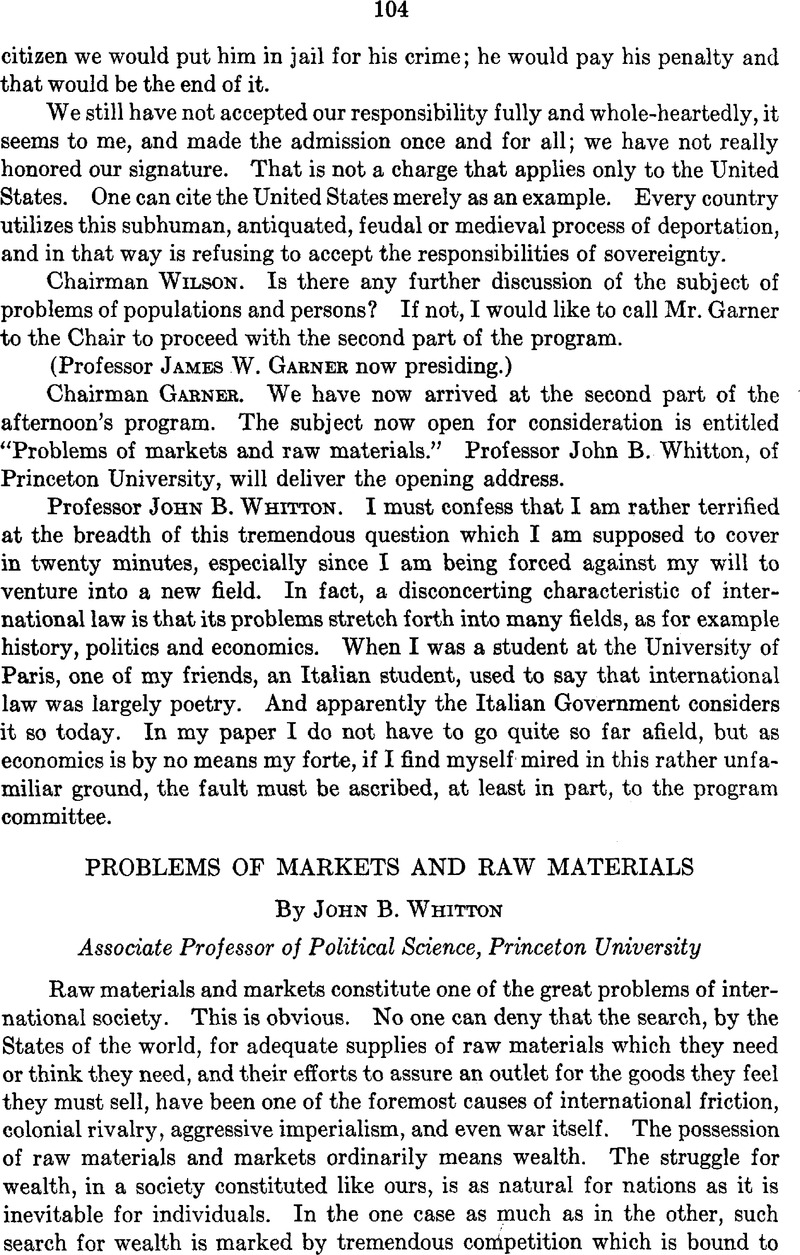No CrossRef data available.
Published online by Cambridge University Press: 27 February 2017

1 The richest raw material regions of the world are in great part under the dominance of the Anglo-American Powers; and that these two national groups, which account for over 60% of the world’s industrial output and exercise financial or sovereign control over 75% of the mineral resources, hold the balance of power in so far as the essential commodities of peace and war are concerned.” (Emeny, The Strategy of Raw Materials, p. 174.)
2 For example, the smelting of ore, manufacture of wood-pulp, the refining of camphor —practices indulged in respectively by Great Britain, Canada and Japan.
3 The following proposal made by Sir Arthur Salter might well be adopted: “No prohibition or differentiation shall at any time, peace or war, be imposed on the export of raw materials from any colony to any place except by international action for the enforcement of international covenants when applied, such action to apply equally to all protectorates, colonies and mandated colonies without any distinction between those which are and which are not controlled by a State against whom the international action is taken.”